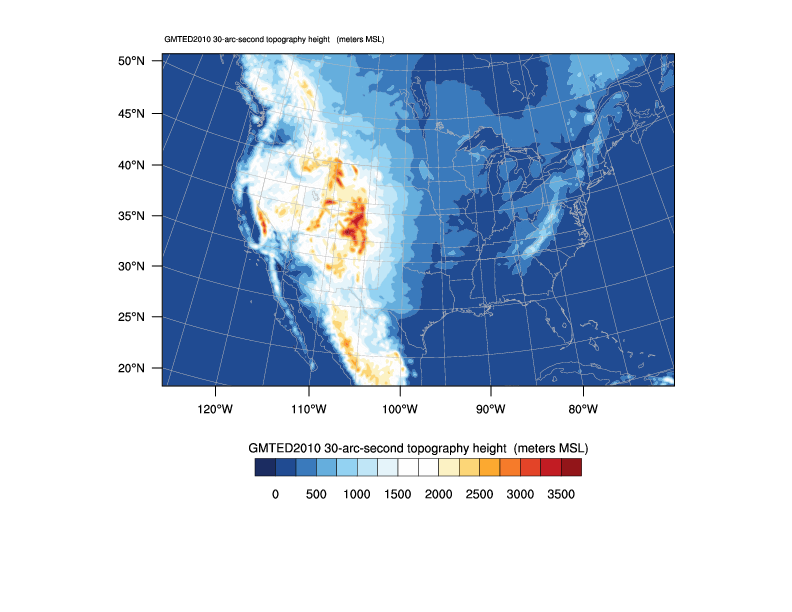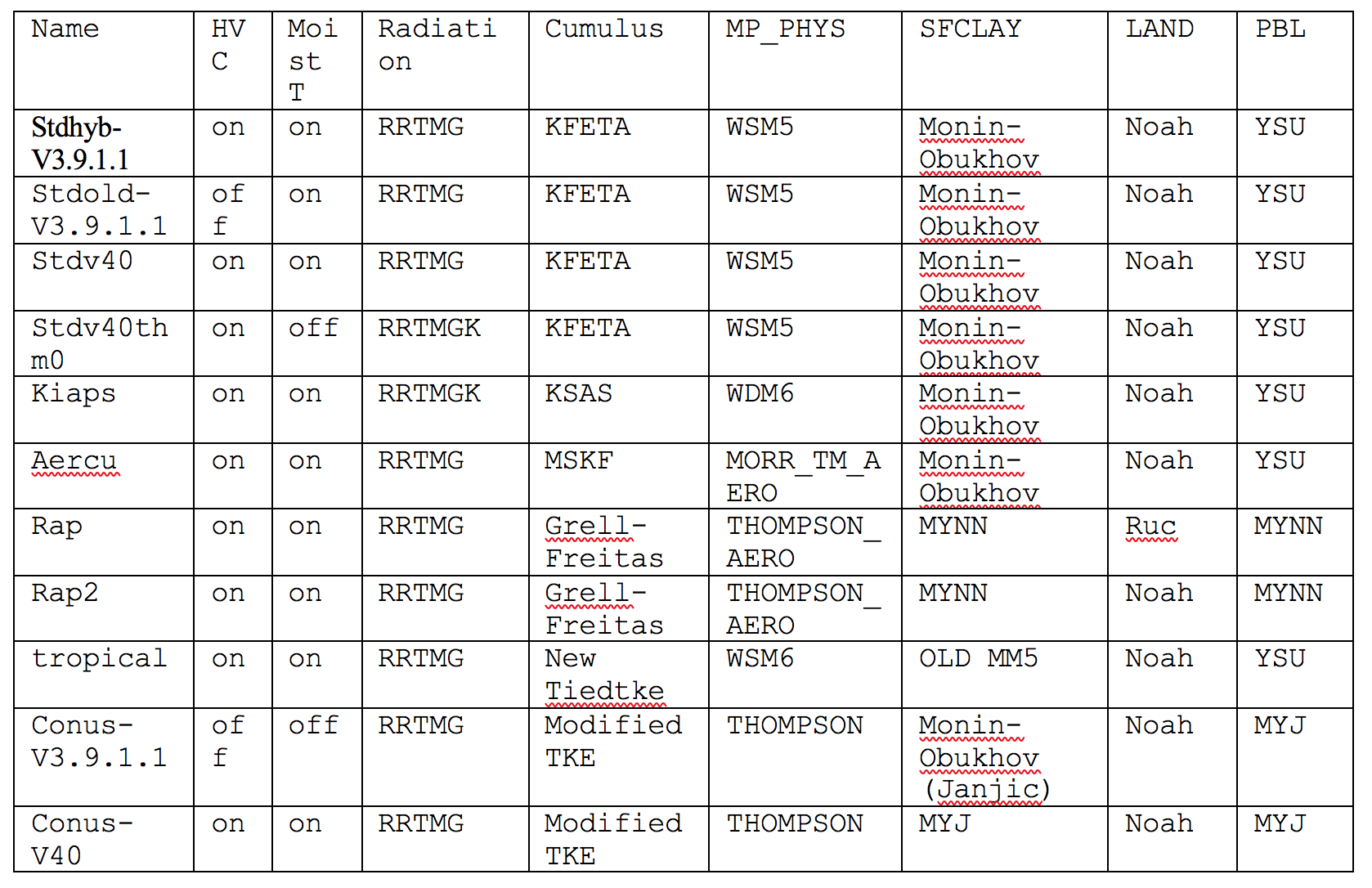

WRF Forecast Testing Extensive testing and evaluation of various physics options have been performed to ensure these schemes can realistically describe physical and dynamical process in the atmosphere. The tested schemes pull heavily from the new contributions from users, but the suite also includes older options to allow comparisons with packages whose behavior is more thoroughly known. The WRF ARW tests are conducted for the summer period from June 1 to June 28, 2015, and for the winter period from January 1 to January 28 2016. - Domain Configuration: CONUS domain with 15-km resolution, as shown in figure below.Grid Structure: 401 x 261 horizontal grid points 40 vertical levels with model top at 30 hPa Lambert-Conformal map projection - Initial and boundary conditions: NCEP 0.25 degree GFS analyses are used to provide the initial and boundary conditions for each of the testing runs. Each single case is initialized daily at 0000UTC and run for 48-hour forecast. For both summer and winter, 28 cases are conducted for testing and evaluation. - Physics options For each of the 28 cases, a set of physics options (or capabilities such as the hybrid coordinate, moist potential temperature) is tested. Various combinations of physics options are tested using WRFV4.0. A baseline test is conducted using both WRFV3.9.1.1 and WRFV4.0 for comparison. The new and modified physics options are shown in this table: - Verification All WRF results are initialized with and compared to 0.25 degree GFS surface and upper air analysis. Domain averaged BIAS and RMSE are calculated for conventional fields.